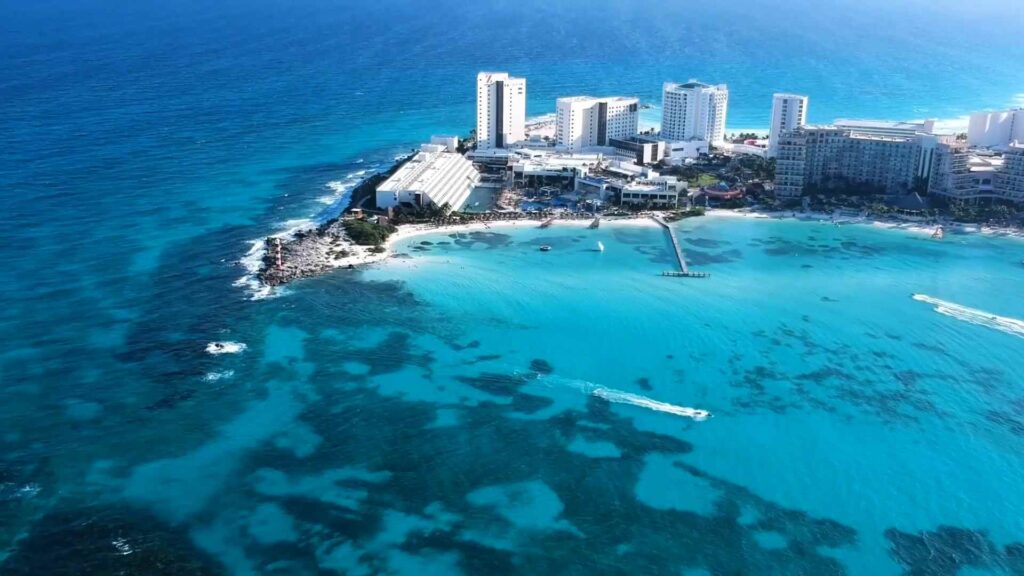The continued presence of sargassum seaweed (a.k.a sargasso, sargazo) on the beaches of Mexico continues to be a concern to many travelers. For those wondering what their experience will be like on their upcoming vacation, we invite you to read more about the problem and how local authorities, hotels, and students are handling the situation
LATEST NEWS ON SARGASSUM SEAWEED
Sargassum season, when the majority of seaweed arrives in the Mexican Caribbean, runs from April to August. As expected, June brings an increase in the amount of sargassum arriving at our shores. The Mexican government and hotels in the Yucatan Peninsula have stepped up their efforts to tackle it, however, the majority of low-budget hotels and hostels do not have the means to clean their beaches on a daily basis.
If you’re keen to avoid sargassum on your Mexico visit, make sure to stay in a hotel which has staff constantly monitoring the ever-changing situation. Plan your vacation with Journey Mexico and we can help you find a hotel that has the means and resources to clean their beaches every day and keep your vacation as sargassum-free as possible.
Four sargassum guzzling boats are expected to arrive in the Riviera Maya next month, according to Riviera Maya News.
The Mexican Navy vessels are currently being tested in Veracruz but should be launched in Cancun towards the end of October.
WHAT IS SARGASSUM?
Sargassum is a brown seaweed with buoyant, oxygen-filled bladders that keep it floating on the surface of the water. It can clump together in huge masses, often miles long, and has been known to wash up on the shores of beaches along the Caribbean coast from the United States all the way to Argentina.
As reported in our post “Mexico and Mother Nature – What you Need to Know 2015“, the sargassum occurrence — which has many ecological benefits — is not dangerous nor continuous and often unpredictable. One week there may be large mounds of seaweed heaped on the beaches and obscuring the translucent sea, while others the beaches are perfectly clean.
Many hotels are taking measures to provide clear beach access through clearing the seaweed and removing it from the beach, while others are unable or unwilling to do so due to a lack of human and financial resources, an unwillingness to alter naturally occurring patterns or long-term concerns that the seaweed will actually protect and enhance their beaches.
The seaweed accumulation has been most prolific on stretches of exposed beach and less noticeable in areas that are protected by natural headlands, bays, or coves. Read more: What You Need to Know about Sargassum Invading the Caribbean.
WHERE IS IT COMING FROM?
To find out exactly where sargassum is coming from and how it ends up on Mexico’s coast, we spoke to Florida Atlantic University’s Dr Brian Lapointe, a research professor and leading expert on sargassum.
He told us that, after studying satellite imagery, it’s understood there is a large amount of seaweed growing between the coast of Africa and Brazil, an area they have coined the Great Atlantic Sargassum Belt.
In that region, there is a range of nutrient sources that are feeding the sargassum and helping it to bloom. These include nutrient-rich run-off from the Amazon River and the Orinoco. There is also a phenomenon known as upwelling, in which nutritious seawater rises from the bottom to the top of the ocean, which helps to feed the floating plant.
Dr Lapointe also pointed out that he has seen areas of low temperature off the coast of Africa, which could indicate nitrogen is coming from the deep seas. Other sources of nutrients include Saharan dust coming from Africa.
The seaweed is moved from the Great Atlantic Sargassum Belt to Mexico and the Caribbean region by hitching a ride on currents. As it makes it way along these streams, the sargassum picks up more and more nutrients and continues to grow.
SARGASSUM SEAWEED FACTS
- Floating sargassum rafts provide a wonderful natural habitat for many sea creatures. According to the National Oceanic and Atmospheric Administration, fish, sea turtles, marine birds, crabs, shrimp, and more all call this floating island home.
- There are more than 300 different species of sargassum including sargassium muticum (more commonly known as Japanese wireweed), and sargassum horneri (also known as devil weed).
- The Sargasso Sea is the only sea in the world without a land bordering it and, as you might expect, is home to large swathes of floating sargassum seaweed. The sea itself was reportedly discovered by explorer Christopher Columbus and his crew who crossed it in 1492.
- In 2018, Quintana Roo businessman Omar Vázquez Sánchez made good use of the local sargassum build-up when he built an earthquake- and hurricane-resistant home from a mixture of sargassum and adobe.
Source: Journey Mexico
